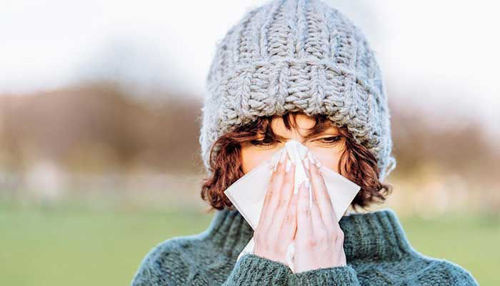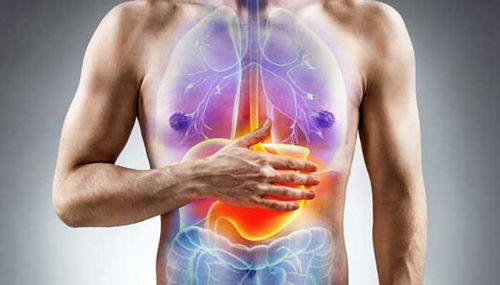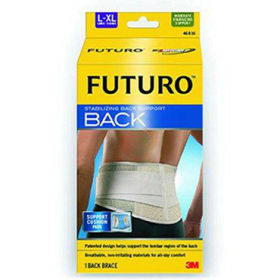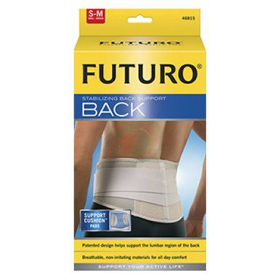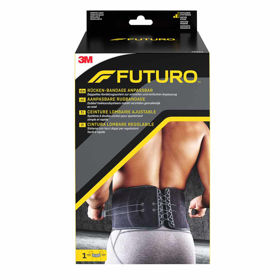Scoliosis is a progressive lateral curvature of the spine. The backs of people with scoliosis have a pronounced C- or S-shaped curvature that deviates significantly from the standard vertical alignment of the spine (right).
SCOLIOSIS: General | Symptoms | Causes | Treatment | Questions and Answers | Sources/references
Scoliosis is sometimes present at birth but most often appears between the ages of 10 and 14 and worsens as the child grows. It occurs in both boys and girls but is usually more severe and progresses more dramatically in women.
Because scoliosis generally does not cause pain, it is sometimes considered a "silent" disease.
Image: Scoliosis is sometimes present at birth.
.jpg)
Untreated, it can cause painful secondary problems, such as intervertebral disc problems, sciatica, or arthritis. In severe cases, the torso can become so twisted and distorted that it affects the heart and lungs, causing chronic fatigue and shortness of breath.
Symptoms
Scoliosis, an abnormal curvature of the spine to the side, can be caused if, when viewed from behind, it appears:
- entire body inclined to one side;
- that the shoulders are unequal and one shoulder blade is more pronounced than the other;
- one leg longer than the other;
- that the hips are of unequal height or seem to be shifted to the right or left;
- back bent during forward bending;
- If viewed from the front, the ribs on one side appear more and are further apart than on the other.
Consult your doctor if:
- You notice any of the previously described symptoms. Be especially careful if there are cases of scoliosis in the family. The condition can worsen over time and should be evaluated and treated by a doctor to stop the progression.
Causes
The causes of scoliosis are poorly known. Doctors assume that a hereditary predisposition is partly involved, but the cause is usually unknown. Scoliosis can also develop in children with diseases of the muscles, bones, or nerves, e.g., poliomyelitis (polio) or cerebral palsy. In children and adults, scoliosis can occur after injuries, e.g., a spinal fracture, or due to diseases that affect the nervous system.
Treatment
Standard scoliosis treatment includes exercise, orthopedic braces, and, in severe cases, surgery. For the most part, corsets can only stop the progression, not correct the curvature that may have already started; that's why an early start is of the utmost importance.
Video content: 5 facts you need to know about scoliosis.

Scoliosis usually progresses rapidly in the early teenage years, when young people's bones grow the fastest. The earlier scoliosis appears in a child, the more pronounced the curvature will be if it is not treated.
Conventional medicine
The treatment that a doctor prescribes for scoliosis depends on the degree of spine curvature in the individual. A mild curvature, less than 25 degrees, can usually be managed with an exercise program to strengthen the trunk.
Orthopedic corsets are adapted to the individual's torso and keep it straight. They are usually prescribed to treat curvatures of 25 to 30 degrees or greater. For children and adolescents, the bodice is adjusted as they grow. They must wear it until the skeleton stops growing; this happens for most girls around the age of 16 and most boys between the ages of 17 and 18.
Picture: Orthopedic corsets are adapted to the individual's body.
.jpg)
A curvature of 40 degrees or more may require surgery. Metal rods are often inserted along the spine to provide a frictional support that balances the curvature. The surgeon also fuses several vertebrae to straighten and immobilize that spine section.
Alternative ways
Home care
Consistent long-term care is essential in the treatment of scoliosis. The patient must exercise diligently; however, those who wear a corset must follow the prescribed schedule of its use. As a rule, it has to be worn 23 hours a day and only taken off for bathing and physiotherapy — and these are requirements that are incredibly annoying to young people. To help your child walk with a corset, try the following:
- Involve family, friends, and teachers to provide emotional support.
- Seek the help of doctors, orthopedists, and physiotherapists to design a suitable exercise program. Encourage your child to participate in activities such as running, brisk walking, and dancing, all of which can be done with a corset. Exercise will not correct the curvature but improve the child's overall health and muscle tone.
- Observe for signs of abrasions and skin damage. The child should wear a comfortable T-shirt with short sleeves under the corset, and by rubbing with alcohol, harden the skin that comes into contact with the frame.
Questions and answers
Who most often gets scoliosis?
Anyone can get scoliosis. However, idiopathic scoliosis, the most common type, usually occurs in children 11 or older. Girls have this type of scoliosis more often than boys[1].
Can scoliosis also occur in old age?
While it is commonly thought that scoliosis mainly affects teenagers, it significantly impacts the elderly. In a study that measured the prevalence of scoliosis in adults aged 60 to 90, 68% were found to have scoliosis[2].
What are the first signs of scoliosis?
Scoliosis, an abnormal curvature of the spine to the side, can be caused if, when viewed from behind, it appears:
- entire body inclined to one side;
- that the shoulders are unequal and one shoulder blade is more pronounced than the other;
- one leg longer than the other;
- that the hips are of unequal height or seem to be shifted to the right or left;
- back bent during forward bending;
- If, when viewed from the front, it appears that the ribs on one side stand out more and are further apart than on the other.
Does scoliosis cause disability?
Scoliosis is not officially listed as a disability, but people with advanced cases may experience residual effects such as severe pain, mobility problems, and breathing or heart problems. Other possible physical limitations may include pain from prolonged sitting or standing[3].
What causes scoliosis?
Doctors assume that a hereditary predisposition is partly involved, but the cause is usually unknown. Scoliosis can also develop in children with diseases of the muscles, bones, or nerves, e.g., poliomyelitis (polio) or cerebral palsy.
Image: Physiotherapy can help reduce or eliminate pain.
.jpg)
In children and adults, scoliosis can occur after injuries, e.g., a spinal fracture, or due to diseases that affect the nervous system.
Sources and references
Source: Family Health Guide. Conventional and alternative treatment, Dr. Jaro Lajovic, Publishing House Mladinska knjiga
- Scoliosis in Children and Teens - https://www.niams.nih.gov
- How Scoliosis Affects Life for Elderly People - https://premiaspine.com
- Can You Get Disability for Scoliosis? - https://brossfrankel.com





